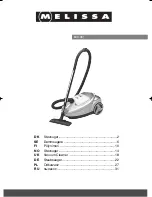
28
T
R
A
H
C
Y
C
N
E
U
Q
E
R
F
N
O
I
T
A
T
O
R
D
E
T
S
E
G
G
U
S
L
L
E
C
P
S
E
Proper maintenance is the key element in keeping the
Gaylord ClearAir
TM
Unit operating at design efficiency. The
following outlines recommended maintenance.
CELL ROTATION
To achieve maximum smoke removal it is recommended
that the ESP cells within the ClearAir
TM
unit be rotated out,
using spare cells provided. A soak tank (optional, refer to
illustration on page 31) is recommended for each spare
cell (optional) to facilitate cleaning. The frequency of rota-
tion is based primarily on the type of cooking equipment
the unit is serving and also on the number of hours per
day of operation, hot water temperature and pressure,
and the type of detergent used. The recommended cell
rotation frequency is shown in the chart at right.
The number of ESP cells a unit has is dictated by the air
volume (CFM) of the unit. The illustrations on page 30 shows
the standard cell configurations from a one cell to a 16
cell unit. There are two types of cells, “Outer cells” and
“Inner cells” marked “O” and “I” on the cell configuration
illustrations on page 30 and marked on the nameplate
of the cell shown on page 48. The differences between
the two are shown on the illustrations on page 29. The
number of “Inner” and “Outer” (optional) spare cells pro-
vided varies with the size of the unit. Refer to the spare
cell chart on page 31.
NOTE: Some units are equipped with a second row of ESP
cells, referred to as double pass and denoted in the model
number by the suffix "2ESP". Refer to the cross section
illustration on page 30 for an example. Additional spare
cells are not provided for double pass units as the second
pass does not get as dirty as the first pass.
In order to have effective cell rotation, it is important to set
up a system so that you know which cell is next to be ro-
tated out. Referring to the cell configuration illustration on
page 30, a number has been assigned to each cell space.
Use these numbers in developing a system for rotation.
CELL ROTATION PROCEDURE
1. Remove the spare cell from the soak tank and drain the
water. It may be necessary to hose the tank interior
to remove grease and smoke residue.
2. Open the electrical compartment and cell access doors.
Power will automatically disconnect and de-energize
the cells.
3. Remove the three (3) wires from the outer cell by pulling
forward from the cell terminals. Push the wire connec-
tors onto holding terminals.
4. Pull the cell straight out slowly.
CAUTION: Each cell weighs 53 lbs. and may be
awkward to handle, particularly cells in the upper
racks. It is highly recommended that a heavy duty
steel wheeled ladder be used in removing the upper
cells. Extreme care must be taken to avoid damaging
the cell. Do not grip or push on the cell plates or the
ionizer wires.
ESP SECTION - PREVENTIVE MAINTENANCE
5. After the appropriate cells have been removed, replace
them with clean cells taken from the soak tank.
Caution -
Be sure to replace the cell with the airflow pointing in the
same direction of airflow as marked on the front of the
cell access door.
6. Re-connect the 3 lead wires to the terminals on the cell.
Close the cell and electrical compartment doors.
7. Place the dirty cells in the soak tanks. Fill with hot water
and add Formula G-510 at a ratio of one part detergent
to ten parts water. Leave the cell in the tank until the next
rotation.
WEEKLY MAINTENANCE
The detergent tank should be checked at least weekly and filled
with recommended detergent. (Refer to page 27.) The Control
Cabinet may be equipped with an optional low detergent
switch and when the detergent tank is empty or the pump
is not pumping the green light on the Command Center will
flash and "Low Detergent" will be displayed on the Com-
mand Center. Refer to page 26 for detailed information on
the detergent pump.
SIX MONTH MAINTENANCE
Every 6 months remove and inspect the ESP cells and
check the following:
1. Check all the spray nozzles to ensure that they are spray-
ing properly.
2. Examine the ESP Cells for the following:
a.Check for any missing or loose ionizer wires. Replace
wires as necessary. (Refer to Ionizing Wire Replace-
ment illustration).
b.Check for any physical damage to the collector plates.
Plates can become bent at their corners and must be
straightened to maintain proper plate spacing.
c.Check for any grease film build-up on the high volt-
age insulators (white porcelain material.) Clean the
insulators to avoid possible high voltage “tracking” to
the ground.
d.Check for any material which has lodged or built up
between adjacent plates.
TYPE OF COOKING
ROTATION FREQUENCY
EQUIPMENT
IN DAYS
LIGHT DUTY ........................................... 30
Ovens, steamers, and kettles
MEDIUM DUTY ....................................... 21
Braising pans/Tilting skillets,
fryers, griddles, grooved griddles,
open burner ranges, hot top ranges,
and conveyor ovens
HEAVY DUTY .......................................... 14
Gas and electric char broilers, upright
broilers, woks and conveyor broilers
EXTRA HEAVY DUTY ............................. 7
Solid fuel broilers
Summary of Contents for ClearAir RSPC-ESP SERIES
Page 9: ...9 TYPICAL INSTALLATION ...
Page 46: ...46 PARTS DETERGENT PUMP 45 PARTS DETERGENT PUMP ...
Page 53: ...53 C 6000 ESP INTERNAL WIRING DIAGRAM ...
Page 56: ...56 RSPC ESP DRAIN ...
Page 57: ...57 SPRAY ODOR WIRING ...
Page 68: ...INTENTIONALLY LEFT BLANK ...
















































